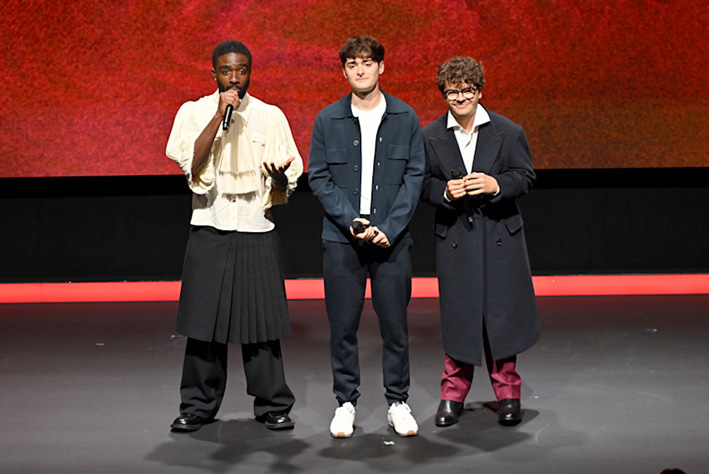‘We’ve evolved’: Netflix to start rolling out in-house ad suite to EMEA next week

Netflix will begin rolling out its in-house adtech suite in EMEA next week, with all 12 of its ad-tier markets having access by June.
“We’ve evolved,” Netflix vice-president of EMEA advertising Damien Bernet told The Media Leader. “Advertisers are going to get new tools, better measurement and more creative formats.”
The Netflix Ads Suite has been live in Canada since November and the US since April.
Netflix’s ad-supported plan now reaches 94m monthly active users globally, up from the 70m figure it reported in November (an increase of 34%).
While the company has thus far declined to share ad revenue figures in its quarterly earnings, Bernet indicated that they are “growing at a faster pace than we were expecting”.
‘Modular’ ad formats, more data and first-party measurement
Netflix previously expanded programmatic buying via third parties Google (Digital & Video 360) and The Trade Desk to EMEA in February. Bernet said Netflix will be releasing a “more advanced version” of its third-party programmatic offering in July.
But the streaming giant’s in-house adtech is billed as a way for advertisers to access enhanced data capabilities, new creative ad formats and more options for programmatic buying and first-party measurement solutions.
According to Bernet, Netflix currently counts over 1,000 unique advertisers of all sizes in EMEA, each of which has a unique way of buying. Some will naturally lean towards Netflix’s “easy-to-buy” programmatic option, while larger brands often prefer more substantial sponsorships alongside notable intellectual property, such as Stranger Things and Squid Game.
As such, the streamer has organised its sales staff into separate teams to meet demand across programmatic and direct media buying.
Brands will be able to incorporate their first-party data into the Ads Suite, either directly with Netflix or through LiveRamp. Third-party data access has also been enabled with partners Experian and Acxiom, with Netflix committing to a clean room strategy to ensure data privacy.
The Ads Suite tools are all about enabling advertisers to be “more efficient” and get the most out of Netflix’s viewing data and its own first-party data on the platform, Bernet explained.
Announcing the expansion at Netflix’s upfronts on Wednesday, actress Lily Collins (in character as Emily in Paris protagonist Emily Cooper) explained: “You can now target more than 100 interests in over 17 categories — including life stages.”
Meanwhile, improved measurement solutions will include a brand-lift measurement solution and post-campaign insights based on Netflix viewing data.
Netflix further outlined a new “modular” framework for ad formats that will launch in 2026. Advertisers will soon be able to leverage generative AI for creative purposes to “instantly marry advertisers’ ads with the worlds of our shows”.
These include options for interactive mid-roll and pause-ad formats that use AI to build custom creative, such as added overlays, calls to action and second-screen buttons.
Bernet added: “When you think about Netflix, how we were successful and revolutionised TV viewing is [by] personalising the viewing experience. We were the first to do it, combining the best of entertainment and tech.
“We believe we’re going to be able to do the same in ads.”
Flexibility for local markets
Netflix claims its ad tier members are “highly engaged”, particularly in the US, where users spend an average of 41 hours per month on the platform (equivalent to 1.3 hours per day).
Bernet said engagement on Netflix’s ad tier is comparable in EMEA markets, albeit with some variance. For example, ad tier users in Germany average 36 hours per month of viewing time, while Spanish ad tier users average 46 hours.
UK streaming subscribers embrace ad tiers across Disney+, Netflix and Prime Video
In the UK, Netflix reaches over 9.4m ad tier users. According to Barb data, it achieved a 4.6% share of total commercial TV viewing (inclusive of linear and VOD) in April, including a 10% share of viewers aged 16-34.
For Bernet, “scale and engagement” is core to Netflix’s proposition and the streamer claims its ads receive as much active attention as its entertainment programming.
Important to Bernet and the clients he works with, despite the Ads Suite being a global product, it is “flexible” for local teams’ media buying norms and the unique preferences for ad formats in different regions.
Live events push
During its upfronts presentation, Netflix announced a slate of new live events, primarily in live sports.
Apart from streaming the WWE each week, Netflix said it would carry another boxing match (a rematch between Katie Taylor and Amanda Serrano) on 11 July, as well as two more NFL Christmas Day games (Washington Commanders vs Dallas Cowboys and Minnesota Vikings vs Detroit Lions).
While the upfronts focused on sports, Netflix has also made inroads in other live entertainment efforts.
Everybody’s Live with John Mulaney, launched in March, is Netflix’s first sustained foray into the type of variety talk show that has historically lifted the major US networks’ late-night programming.
According to Bernet, the live efforts have thus far been part of a “content strategy first and foremost”, rather than about driving advertising interest.
Live events have largely been targeted towards US audiences interested in sports over the past year, but Bernet is “hopeful” that Netflix will look to expand to offer live events beyond sports, including more events tailored for European markets.
He added that core to Netflix’s consumer experience is providing “the right content for the right country”.
Netflix thinks your binge habits are more important than subscriber count




